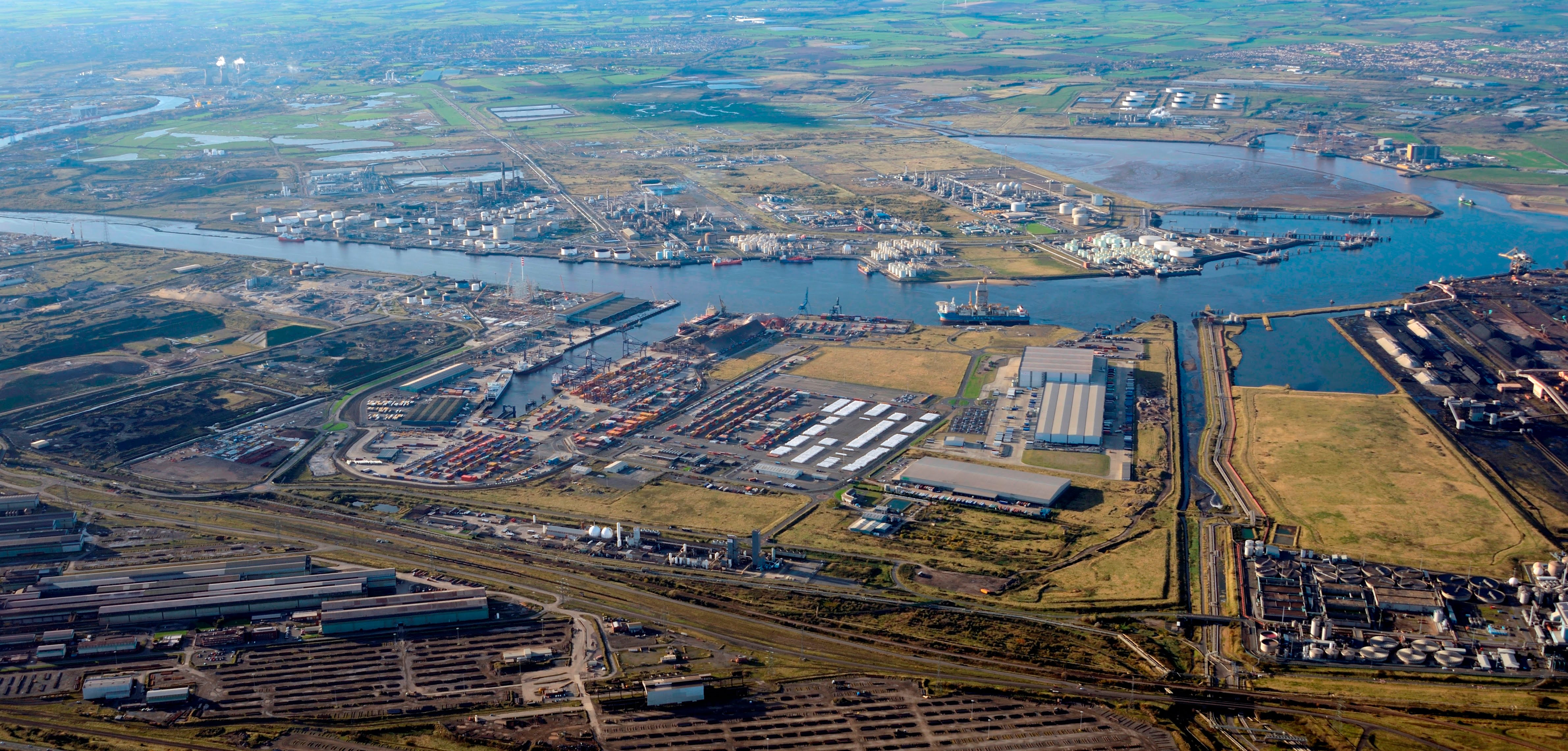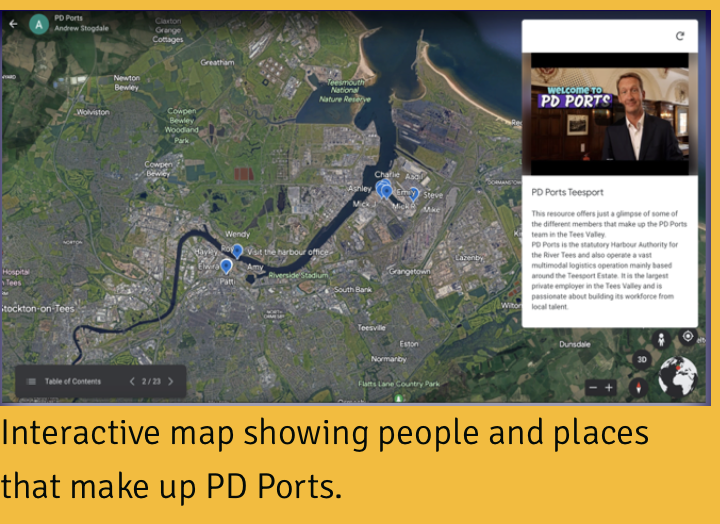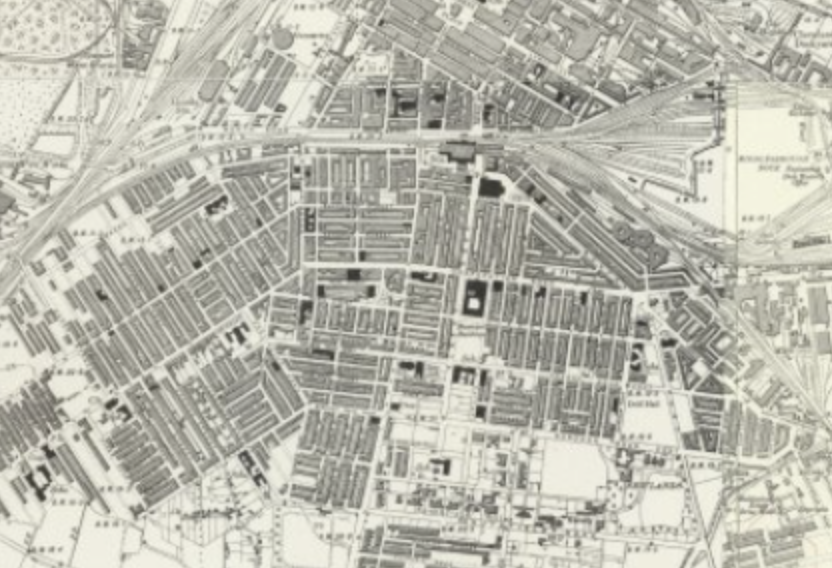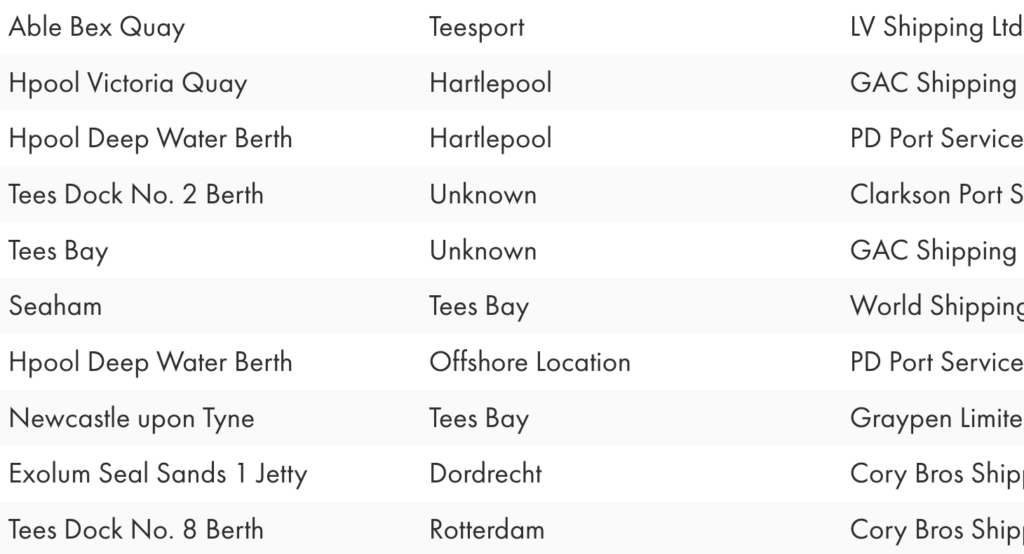INTRO
Teesport
Teesport is the fourth busiest port in the UK. It is a manmade dock that can hold multiple large vessels at the same time. The dock is split into two main areas, Bulks and Unitised. As you sail in, Bulks is on the right. The cranes here are designed to load and unload loose materials such as gravel, corn and salt. The nearby Bulks Terminal allows storage of materials if required. This area has recently been enhanced by two new electric powered cranes which are part of the port’s attempt to decarbonise as soon as possible.
At the end of the dock is a ramped area which can be used for ‘roll on, roll off’ cargo. Typically the wagons are loaded and unloaded using small trucks that live on the port. The wagons are then picked up by the sort of trucks you see on the roads taking goods to more localised destinations.
The other side of the dock, on the left, is called ‘Unitised’. Most goods in the world are transported in containers, electrical goods, clothes, furniture, car parts….most things you will see in shops. The Unitised team loads and unloads containers and makes sure that they are forwarded to where they need to be. The whole area is full of stacked containers ready for pick up or export. Many are placed on the back of wagons for trucks to take to localised destinations; shops or factories. Others are put on the regular train services that run to and from the port and connect to different parts of the country. A locomotive can pull multiple containers at once and is another way that the port is trying to reduce their environmental impact.
Teesport is owned and run by PD Ports. They have multiple sites along the river and also run the Port of Hartlepool. A key part of their role is also as the Port and Harbour Authority.








